Anyone who has been dancing in a milonga for some time will know what it’s like to get back on the dance floor even after a demanding yet exciting tanda.
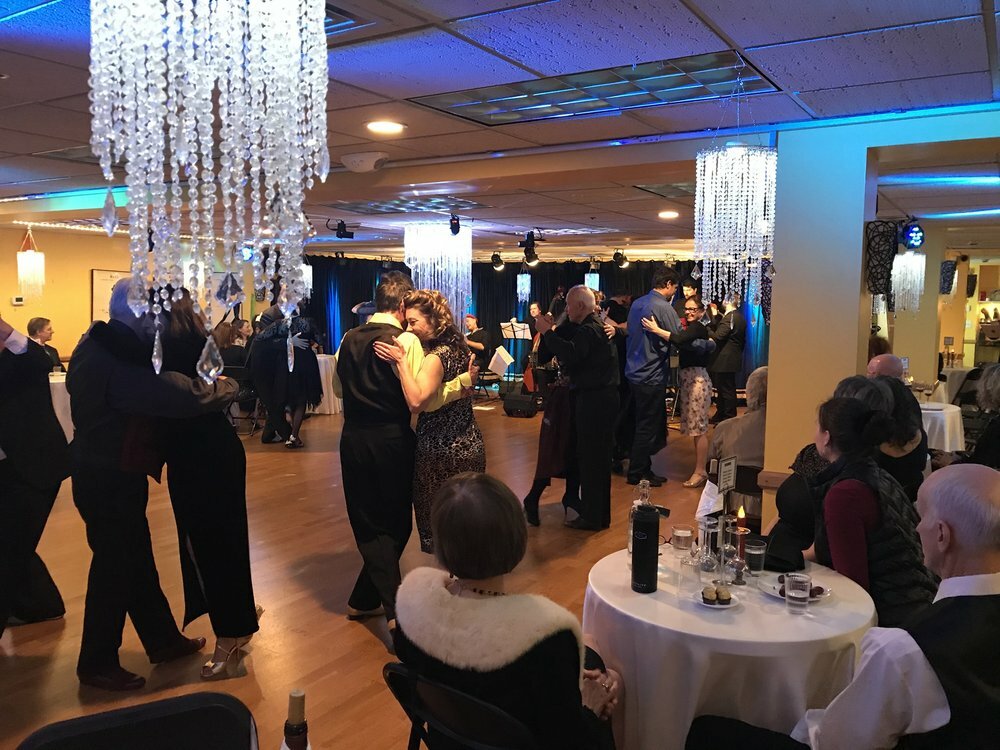
After completing a dance of, say, Pugliese, one might consider sitting out the next one. But when D’Arienzo starts playing, one can’t seem to help but cabeceo their usual partner for this orchestra, and the thought of sitting it out with some wine promptly gets sent to the back burner.
Eventually, one might realize that one has been dancing for four hours straight — which is a mean feat in itself!
Often, when the topic of milongas arises, the discussion might typically revolve around one’s partner or the codigos that govern proper etiquette.
However, there is one aspect of the milonga that might not always be talked about but remains a crucial factor of what actually makes this event enjoyable: the music and the DJ.
To many beginners who are just discovering the joys of a milonga, the tango music being played during tandas might not be a huge concern. But, certainly, to the more experienced dancers, the choice of songs can either save or ruin the night.
To the more experienced dancers, the choice of songs can either save or ruin the night.
Though often overlooked, a Tango DJ actually plays a crucial role in encouraging dancers to return to the dance floor despite having danced for hours already.
But how do they do it? What are the tricks up a tango DJ’s sleeve that they can make everyone dance all night long without them feeling tired?
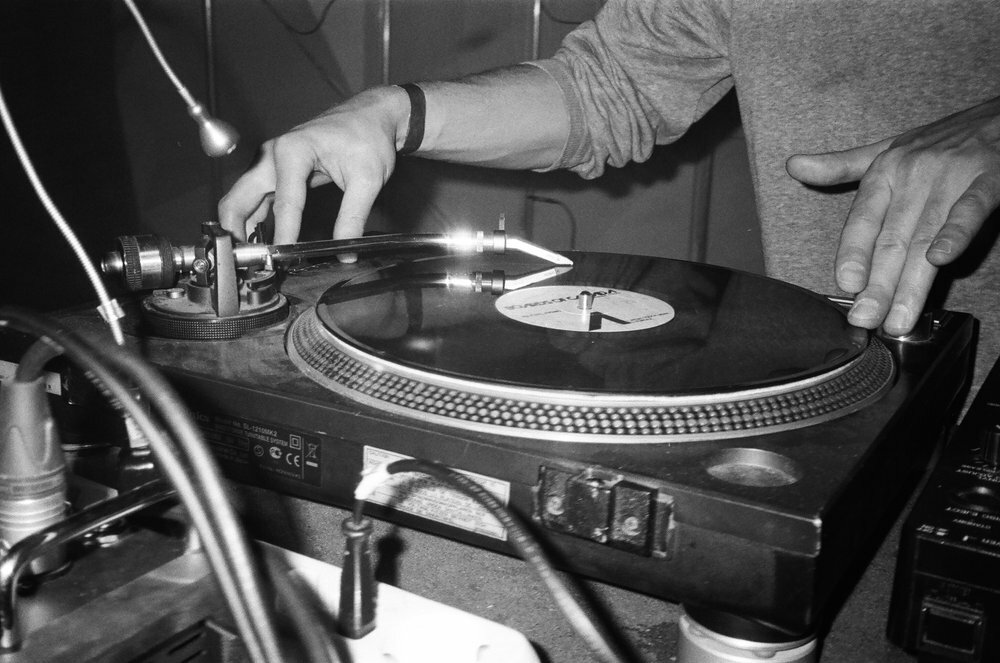
The Role of a Tango DJ
To begin understanding the process of DJing for a milonga, one must first be aware of a tango DJ’s role. Many resources and materials explain this, but,
ultimately, most agree that a tango DJ is responsible for giving everyone an enjoyable dance experience, partner choices notwithstanding.
Tango Argentino de Tejas provides an overview on the role of a tango DJ and how important their influence is:
“Described simply, the DJ plays the music at a milonga, practica or other tango event in which recorded music is used. In playing the music,
the DJ assumes control of the energy and success of the event, and becomes responsible for the experience of a whole room full of people and, potentially, the evolution of the tango community.
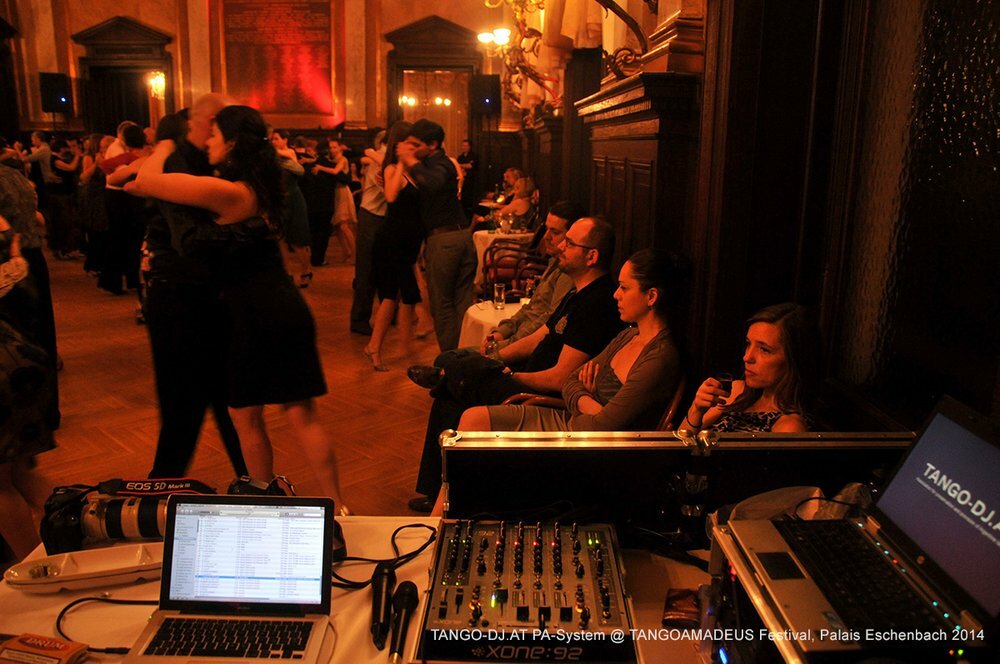 Photo from https://tango-dj.at/PA-system/index.htm
Photo from https://tango-dj.at/PA-system/index.htm
“The DJ can greatly affect the tango community by influencing how well people dance and how well they regard their evening of dancing.
If the DJ plays music that has clear dance rhythms and inspires the dancers, they are more likely to move with energy and with a connection to the rhythm of the music. The DJ can also prepare dancers to go to Buenos Aires and have a great time dancing by playing the classics of tango — the music the dancers are likely to hear at milongas in Buenos Aires.”
Being a tango DJ in itself is an art, and many are self-taught, learning from extensive experience.
However, this doesn’t mean that it’s easy.
Like many art forms, there are still rules to study and follow before an aspiring tango DJ can achieve a kind of expert intuition in building the perfect tanda.
Different approaches can be applied depending on the DJ’s knowledge, song collection, equipment, and a host of other factors.
Building the Perfect Tanda
Creating a cohesive and thrilling tanda takes into account not just the songs but the sequence in which they are played.
In some cases, a DJ might have a prolific collection of tango songs, but that doesn’t necessarily mean that they will be able to keep everyone dancing. On the other hand, some DJs might have a limited music library, but their skill in knowing which songs to pick and when to play them can make all the difference.
That said, here are some factors that can affect how a tango DJ might deliver a great experience each night:
Fundamental Knowledge of Milongas and Musicality
It isn’t a requirement for a tango DJ to know how to dance tango but those who have participated in milongas as dancers can have an edge over others.
This is because they have a deeper understanding of what makes a milonga truly memorable, not only from a DJ's perspective but also from those who are dancing to the songs themselves.
If a DJ has a solid fundamental knowledge of milongas, it would be easier for them to develop an approach that keeps the dancers happy.
Generally, timing is key when trying to build a tanda. Tango Voice has a brief explanation of why this is important:
“Milongas generally last between 3 and 6 hours. This results in between 3 and 6 tanda cycles in a milonga.
As a general strategy, musical intensity increases from the first cycle through the middle cycles; it is recommended here that in the last cycle (which typically omits the tanda of milonga), when many dancers have more limited energy reserves, dancers’ motivation is maintained by substituting music with higher emotional intensity for music with higher physical intensity.”
Since DJs aren’t on the dance floor themselves, many might forget that the dancers are expending a lot of physical energy based on the songs being played. As different songs have varying beats, speeds, and intensities, the right mix will give them some breathing space, enough to inspire them to dance in the next tanda.
Not to be overlooked is the cortina, which is also important in making the music flow smoothly. Tanda of the Week provides a basic explanation of what the cortina is:
An example of Cortina
“In milongas, the DJ will play a tanda followed by a cortina (a short song of different style) which will mark the ending of the tanda. During the 30-90 second cortina, the dancers will leave the floor and start looking for their next partners. After the cortina finishes, the DJ continues with another tanda and, after finding a new partner, the dancers will get on the dance floor again.”
From a more technical perspective, the cortina can also affect the mood of the dancers. Tango Voyage explains:
“Cortinas are a bigger upfront effort, but are much easier to deal with and use afterwards. [...] Cortinas are usually a different style of music, something that is more difficult to dance to, or more humorous I’ve found to work well. [...] Cortinas and type are just as important as the tandas themselves. Having a heavy metal cortina after a vals will really throw off the mood on a dance floor, so plan accordingly.”
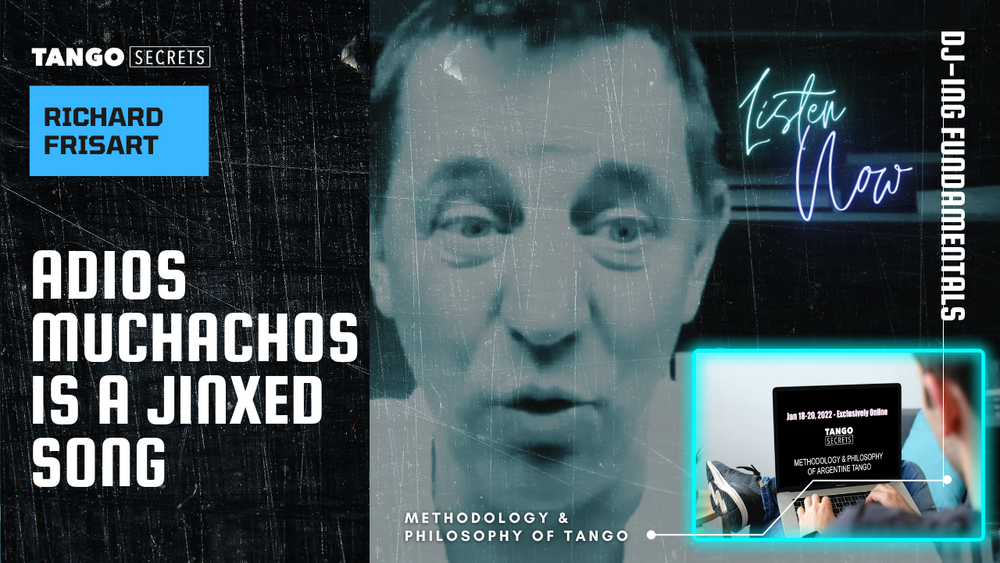 Access Tango Secrets - Tango DJ Fundamentals - a conversation with Richard Frisart: https://courses.ultimatetango.com/courses/tango-secrets-Fundamentals-of-tango-DJ-ing-Richard-Frisart
Access Tango Secrets - Tango DJ Fundamentals - a conversation with Richard Frisart: https://courses.ultimatetango.com/courses/tango-secrets-Fundamentals-of-tango-DJ-ing-Richard-Frisart
Choosing the Right Songs
When it comes to planning which songs to play, a DJ should have at least a basic knowledge of popular tango songs, primarily those composed in the Golden Age.
This is because these are the most familiar to almost all tango dancers, and this familiarity and consistency is one factor that will encourage them to keep dancing.
If, for example, a DJ plays an unfamiliar song, dancers might hesitate to participate in a tanda because they have to spend more time minding the song than enjoying the dance itself.
There’s no one way to pick the right songs for a tanda. In most cases, it really depends on the atmosphere of the milonga, the community, the kind of dancers participating (those who love the close embrace, salon style, etc.), the floor space, and others. Among the many suggestions and tips for picking songs, one of the most extensive is Tango Voice’s "Recommendations for Music Selection at Milongas by Orchestra," which includes the following:
Remember, the categorization below is just someone else’s opinion. A reference point.
I. Essential Tango Orchestras
Carlos Di Sarli
Juan D'Arienzo
Anibal Troilo
Francisco Canaro
Osvaldo Pugliese
II. High Priority Tango Orchestras
Ricardo Tanturi
Rodolfo Biagi
Miguel Calo
Angel D'Agostino
Edgardo Donato
Enrique Rodriguez
III. Secondary Priority Orchestras
Alfredo De Angelis
Pedro Laurenz
Osvaldo Fresedo
Lucio Demare
IV. Low Priority Orchestras
Francisco Lomuto
Orquesta Tipica Victor/Adolfo Carabelli
Roberto Firpo
Ricardo Malerba
Jose Garcia
Alfredo Gobbi
Enrique Francini and Armando Pontier
Julio De Caro
It’s a tradition in almost all milongas to end the night with “La Cumparsita.” This can either be the last song of a tanda or as a separate song.
A simpler, more basic guide to picking the right songs for a tanda is outlined by Tangology 101:
“Play mostly music from the Golden Decade (1935 to 1945).
Create tandas with songs by the same orchestra, from about the same time period.
All the songs in a tanda should have a similar feel, tempo and rhythm.
Arrange tandas in the following sequence: Tango, Tango, Vals, Tango, Tango, Milonga.
Pick songs that are good for dancing. Don't try to show off with the newest great song you found that sounds great but is horrible for dancing.
Play a variety of different styles of music. Play tandas which are rhythmic and energetic, elegant and smooth, and slow and dramatic.
Play music for the crowd, not for yourself. If you dislike a particular orchestra, but you know that many dancers love that orchestra, then spend some time and put a few nice tandas together of that orchestra. Also, if you love alternative music, but the crowd at your milonga that night is a traditional crowd, then do not play alternative music.”
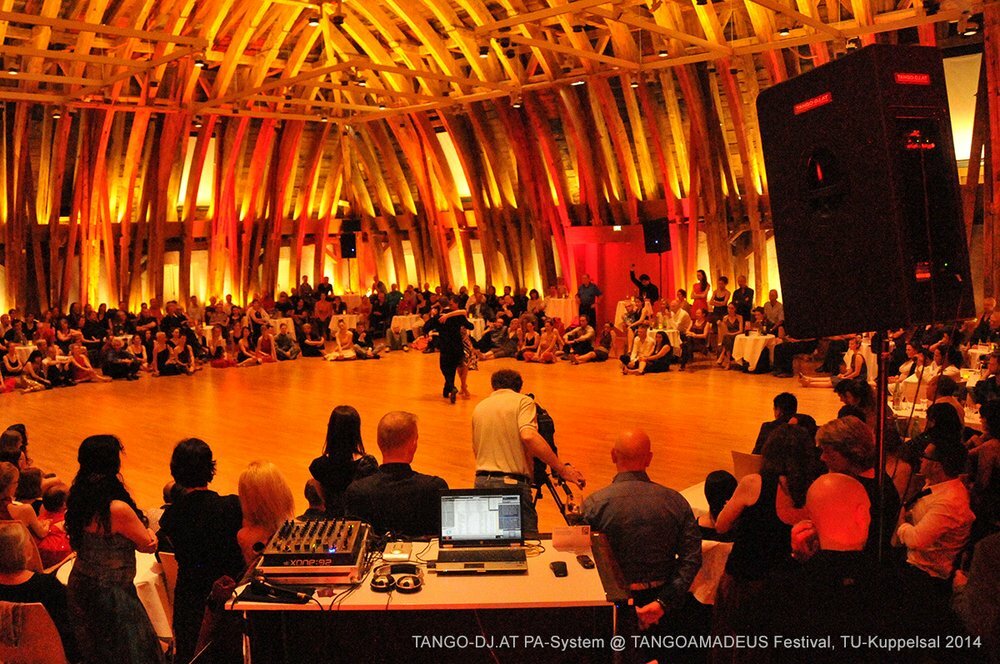 Photo from https://tango-dj.at/PA-system/images/TANGOAMADEUS-2014-Kuppelsaal-web.jpg
Photo from https://tango-dj.at/PA-system/images/TANGOAMADEUS-2014-Kuppelsaal-web.jpg
What Makes a Good Tango DJ
Taking off from the last bullet point cited above, it bears emphasis that
a good tango DJ must play for the crowd and not use the milonga as a vehicle to show off their collection of tango music.
This is perhaps the most important quality of a good tango DJ, which keeps dancers on the floor for hours on end. Further to this point, Tango Mentor provides four principles that a good tango DJ should practice, a summary of which is provided below:
Music chosen for the tanda should be easy and does not require too much effort from the dancers.
Tandas must also be predictable and consistent. This means that if a DJ starts with an emotional tanda, it would be quite off-putting to suddenly play songs that are more rhythmic or upbeat, thus ruining the mood.
The music must also be energizing. There are different ways to interpret what energizing means, but this should be understood as music that inspires dancers to keep dancing.
Timing should also be considered, particularly when it comes to the atmosphere of the milonga. This means the DJ should be sensitive and intuitive enough to know which songs dancers need at a specific moment.

On the other hand, the blog Chhavi and Joy cites two things that a tango DJ should always avoid:
Playing what they like to hear
Trying to “educate” their audience by picking obscure songs

Masters of Musical Manipulation
More than just having a great partner, being able to enjoy dancing to the music of a milonga is what makes this experience so breathtaking for many tangueros and tangueras.
A tango DJ’s mastery of musical manipulation is what keeps dancers coming back even after hours of intense dancing, primarily because they are experts at taking into account not only the proper song choices but also the atmosphere and the community for whom they are playing.
They may be working in the background, but a tango DJ’s skill, knowledge, and intuition are what can make any milonga an evening to remember.
It doesn’t matter if you are entirely new to dancing… or have been dancing your whole life. We distill everything you need to know to be able to hit the milonga into simple, easy-to-understand steps. Regardless of your level, this course has something for everyone!
At the end of Tango Passport, you’ll be able to improvise and dance the tango…. anywhere in the world. More details HERE.

